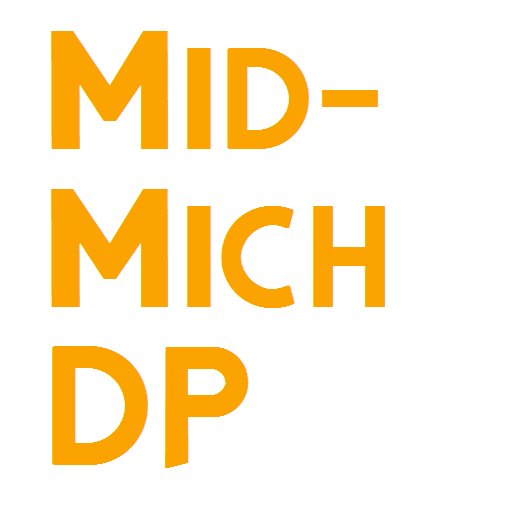Here in Michigan, we have an NDSA Innovation Award winning (that's right, NDSA Innovation Award winning!) organization that does just that, recognized at Digital Preservation 2016 for its "highly original and successful organizational model in fostering innovation sharing and knowledge exchange": the Mid-Michigan Digital Practitioners.
This is such a wonderful group of people. Founded in 2013, the mission of the group is to provide an open and local (and free!) forum for conversation, collaboration and networking for professionals working with digital collections in Michigan. Their biannual meetings, which rotate between institutions in the region, are designed democratically via pre- and post-conference surveys and typically draw between 40 to 70 participants and have attracted student groups, practicing professionals, vendors and even the general public.
October 13-14, 2016 Meeting
Mike, Dallas and I attended the most recent meeting on October 13-14, 2016 at the MSU Libraries in East Lansing.
The first day consisted of two workshops:
- Policies and Strategies for Managing Digital Assets, in which attendees had the opportunity to:
- fine-tune and define the scope of digital assets for their own institutions;
- analyze needs and solutions for their digital asset management; and
- practice drafting policy or updating existing policy for digital assets.
- XML/XSLT, which covered:
- basic syntax of XML/XSLT;
- tools for working with XML/XSLT;
- using MarcEdit to transform MARC data to MODS, Dublin Core, EAD, etc.;
- editing XSLT stylesheets; and
- real world examples of XSLT in action.
As you can see, this was a nice mix of policy and technology.
The second day was full of excellent presentations.
- Digital Detroit: Getting Started with Video, although billed as a "getting started" presentation on video digitization, was a deep dive into file formats, codecs, containers and compression, as well as capture devices, setup and more.
- Merging Traffic: Accessing Archival Collections and Museum Artifacts Through a Common Interface discussed the Henry Ford's new Digital Collections portal (and all the behind the scenes magic that went into it).
- APIs in the Library: Selected Projects that Expand the Local Information Environment was a super informative introduction to Application Programming Interfaces which I highly recommend to anyone whose ever wanted to get started with APIs (e.g., the ArchivesSpace API!).
- Cataloging Archival Collections: Grouping Collections to Aid Retrieval gave an overview of one strategy for collocating collections in a discovery interface based on collection/research guides that the archivists have created to aid researchers.
- In Access Update for GVSU, librarians there gave an update on where they were, where they are and where they're going with regard to providing access to digital collections at GVSU.
- Using Open Refine for Data-driven Decision Making covered the way that one archivist used OpenRefine, a free, open source, powerful tool for working with messy data to cut processing time by approximately 99.8%
- Turning Your Smartphone Into a Scanner for Cumbersome Projects: Did you know that you can use your smartphone to digitize hard-to-capture paper and photographic items and quickly get them out to researchers? (Hint: You can.)
- Digital Scanning Course Materials discussed the excellent, progressive work of the MSU Course Materials Program, a one-stop shop at the MSU Library for faculty seeking to use third-party copyrighted content in their courses.
- Legacy Computer Challenge gave an overview of the challenges encountered when working with two legacy computers, a Mac Classic II (1991) and a Power Mac 6500 (1997), which was a catalyst for discussing a MMDP Best Practices and Tech Exchange.
Finally, during an open mic session we gave an update on our ArchivesSpace-Archivematica-DSpace Workflow Integration project, which wrapped up shortly after that meeting.
All in all, a busy and informative day!
Want to Learn More?
You can learn more about this "regional collective of librarians, archivists, museum curators, conservators, historians, scholars and more engaged in creating and curating digital collections in Mid-Michigan and the surrounding region" on the Mid Michigan Digital Practitioners website or catch up with them on Twitter. You should also feel free to join the listserv.If you're in the area, the next meeting is March 23-24, 2017 in Detroit... we'll see you there!


Thanks Max for sharing your experiences from your Digital Practioners Organization Meeting. Hope you learned new things from that.
ReplyDelete